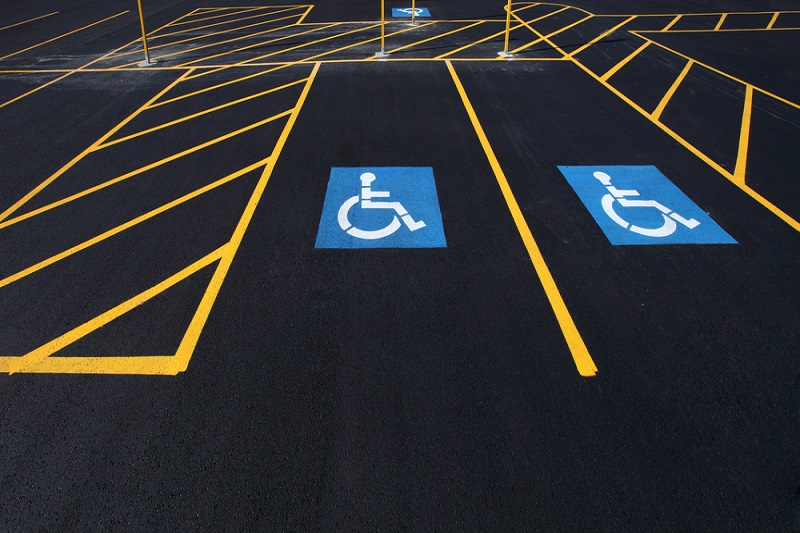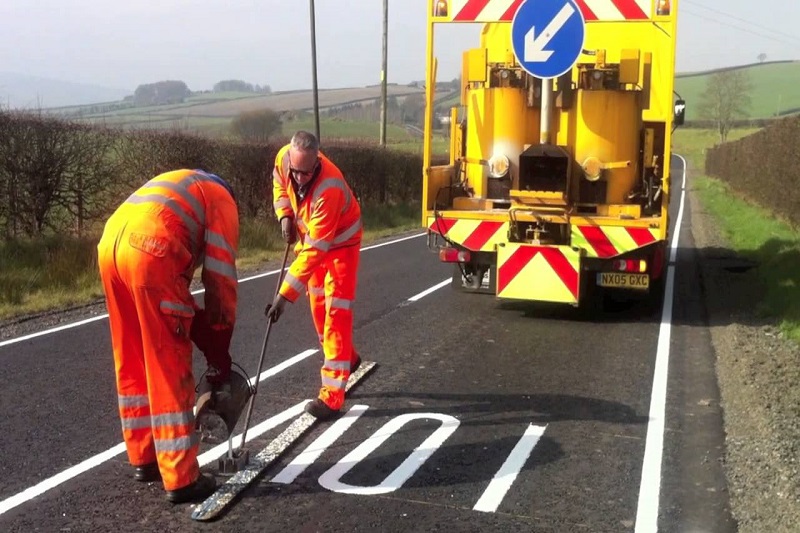Have you ever taken a stroll through a parking lot and wondered why there are a bunch of painted lines? Or maybe the question has crossed your mind as you maneuvered a maze-like warehouse teeming with workers, vehicles, and machines. Who knew humble lines could dictate so much of our daily lives? Welcome to the world of linemarking. In this post, we’ll delve into the hidden mechanics of these simple yet essential elements, their crucial role in ensuring safety and efficiency, and how substantial their impact can be in transforming a space.
Linemarking may seem trivial to some, but these unassuming lines are not just for aesthetic purposes. They are a language of their own, serving as vital guideposts for navigation and gameplay and playing a huge part in managing traffic flow, preventing accidents, and promoting efficient operations. Without these lines, the world would be a considerably more confusing, chaotic, and dangerous place to navigate.
Whether it’s distinct lines defining pedestrian crossings, bold markings on roads or car parks, or cleverly designed stencils in industrial warehouses, linemarking is an unsung hero of urban design that rarely gets the spotlight. This piece aims to explore and appreciate the essential contribution of linemarking to our everyday safety and efficiency.
The “Why” Behind Linemarking
When considered from an architectural design perspective, linemarking provides a form of non-verbal communication. It guides traffic, indicates hazards, delineates storage areas in warehouses, or illustrates boundaries in sports grounds. Linemarking creates a sense of order, ensuring vehicles and pedestrians maintain their respective lanes, and reducing chances of collisions or accidents.
Additionally, they serve as crucial reminders and guidelines to abide by traffic rules. Painted lines create tangible boundaries that force compliance and reduce chaos, resulting in improved traffic flow and minimizing wastage of space, making everything run seamlessly and more efficiently.
In essence, linemarking, whether on roads or in warehouses, serves as a visual tool to guide, direct, manage and ensure the safety of both workers and the public.

How does Linemarking contribute to Safety?
Linemarking plays an essential part in pre-emptive safety measures. From preventing accidents by indicating safe walking areas to marking fire exits, it helps reduce hazards in diverse environments. Clear marking of pedestrian and vehicle separation routes goes a long way in preventing accidents. High-vis line marking paint is also used in low light or foggy situations, enhancing visibility and safety during such conditions.
The Efficiency of Linemarking in Warehouses
An efficient warehouse is a landmarked warehouse. Well-defined pathways and zones increase productivity by reducing confusion, ensuring materials and goods are stored in the right place, and helping in efficient space utilization. It also creates a safer, more organized environment for workers, thereby boosting morale and performance.
The Art and Science of Linemarking
Linemarking is not just a matter of throwing paint on the road. It involves careful planning, proper measurements, skilled execution, and regular maintenance. The appropriate type of paint, reflective beads for night-time visibility, and even the thickness of the lines engineering aspects ought to be considered to ensure optimal efficiency and safety.

The Environmental Footprint of Linemarking
With growing concerns about environmental conservation, the Linemarking industry also has its part to play. Environmentally friendly paints and removal methods have started to gain traction, contributing to sustainability efforts without compromising effectiveness.
The Future of Linemarking
Advancements in technology have started to shape linemarking’s future. From using durable kinds of paint to employing GPS-guided linemarking machines, it’s only a matter of time until we see self-healing paints and solar-powered glow-in-the-dark lines.
Conclusion
On the surface, linemarking seems incredibly simple, almost too mundane to ponder upon. But, as we dug deeper, it’s apparent how these lines silently dictate the rhythm of our daily lives, ensuring safety and efficiency. The calculated precision, complexity, and importance reinforce the significant role linemarking plays across various industries and avenues, from roads to warehouses, and sports fields to parking lots. The humble linemark doesn’t merely mark out spaces; it shapes them, directing movement, preventing chaos, fostering productivity, and defining the way we interact within and navigate these spaces. Let’s honour this unsung hero who diligently keeps us safe and efficient, day in, day out.

